Understanding the Cost of Curve Treadmills


Intro
Curve treadmills have emerged as a preferred choice among fitness enthusiasts, thanks in part to their innovative design and the unique advantages they offer. Their rising popularity prompts a deeper look into the cost factors associated with these machines. Understanding the investment involved in curve treadmills is crucial for individuals aiming to make informed fitness equipment decisions.
This article seeks to unpack the intricacies of pricing surrounding curve treadmills. We will explore various elements that influence their costs, spanning from the underlying technology to the material and brand reputation. Moreover, we will address both budget-friendly and premium options, shedding light on their features, longevity, and overall value. With the right knowledge, users can harness the full potential of curve treadmills while ensuring that they align with their financial and fitness goals.
Key Benefits
Curve treadmills provide several distinct advantages over traditional ones, which are important to consider when evaluating their cost.
Physical Health Benefits
Utilizing curve treadmills reflects more than a trend; it represents a shift in how people approach cardio training. The non-motorized nature of curve treadmills necessitates that users generate their own pace, which enhances cardiovascular conditioning and engages more muscle groups. This promotes improved endurance and strength.
Additionally, the design of these treadmills tends to reduce impact on joints. Because they are primarily powered by the user, there’s a lesser degree of abrupt force compared to standard, motorized treadmills. Such features make them particularly suitable for individuals recovering from injuries or those who experience joint discomfort.
Mental Well-being Enhancements
Engaging in physical activity, especially on a curve treadmill, can significantly enhance mental health. Exercise is known for its ability to reduce stress, improve mood, and promote overall emotional well-being. The focus required to maintain balance and pace on a curve treadmill can serve as a distraction from daily stressors, allowing users to experience a meditative effect during workouts.
"Investing in a curve treadmill can yield mental and physical benefits, making them a worthy addition to any fitness agenda."
The financial commitment to a curve treadmill may be greater than traditional machines, yet the comprehensive benefits they provide can justify the investment in both body and mind.
Prelims to Curve Treadmills
The rise in the popularity of curve treadmills is not simply a trend; it represents a significant shift in fitness equipment design and functionality. Understanding these specialized devices can equip health professionals and fitness trainers with essential insights that influence their training strategies and client recommendations.
Importance of Curve Treadmills
Curve treadmills offer unique benefits over traditional models. Their curved surface allows for self-paced running, which mimics outdoor conditions. This feature provides an effective cardiovascular workout that engages various muscle groups.
Moreover, these treadmills encourage proper running form and biomechanics due to their design. They can cater to different fitness levels, making them versatile for personal training. However, potential buyers need to be aware of the costs involved and how they differ from conventional treadmills.
The decision to invest in curve treadmills hinges on understanding their value in enhancing fitness routines. Learning about their construction, advantages, and cost implications helps health and wellness professionals make informed recommendations to clients. Ultimately, the introduction to curve treadmills can redefine personal training approaches and influence clients' long-term fitness journeys.
Average Price Range for Curve Treadmills
The average price range for curve treadmills is a significant section to cover in the context of purchasing fitness equipment. Understanding the various pricing tiers helps potential buyers align their budget with their fitness goals. Curve treadmills can vary widely in cost due to features, brand reputation, and build quality, making it essential to assess options wisely. By exploring the entry-level, mid-range, and high-end models, readers can better gauge what fits their needs. This segment also emphasizes the long-term value of investing in an effective piece of equipment.
Entry-Level Curve Treadmills
Entry-level curve treadmills typically range from $1,000 to $2,000. These models cater to fitness enthusiasts who may be new to using this equipment or are on a budget. While they may not have all the high-tech features of pricier models, they still offer a basic version of the curved design, which encourages a natural running form. In addition, brands like Assault Fitness and True Fitness provide reliable options that include essential functionality without excessive frills. Cost savings can be realized without completely sacrificing quality if one opts for these entry-level models.
Mid-Range Curve Treadmills
Mid-range curve treadmills usually fall within the $2,000 to $3,500 range. This segment often includes additional features such as advanced monitor displays, better construction materials, and enhanced customer support. Brands such as Woodway and Octane Fitness offer treadmill models in this category that provide a more satisfying user experience while maintaining durability. Investing in a mid-range model can yield a significant advantage for users wanting to push their fitness levels while still being mindful of pricing.
High-End Curve Treadmills
High-end curve treadmills typically cost upwards of $3,500. These advanced models are designed for serious athletes and fitness trainers who seek the best performance and build quality. They often include smart technology, personalized workout programs, and superior materials. Recognized brands in this space, such as Life Fitness and Technogym, set a standard for excellence in both performance metrics and user experience. While the initial investment is higher, many users find that the longevity and enhanced functionality justify the cost, especially in professional settings.
Investing in the right curve treadmill means understanding both your fitness needs and budgetary constraints. Each pricing tier offers distinct benefits that cater to different levels of commitment and performance.
Factors Influencing the Cost of Curve Treadmills
Understanding the factors that influence the cost of curve treadmills is essential for making an informed purchase. These elements range from materials used in manufacturing to brand reputation, each playing a critical role in pricing. Factors such as features, technology, warranty, and customer support also contribute to the overall value proposition. As fitness equipment requires a significant investment, knowing these components empowers consumers to make smarter decisions that align with their specific needs and budgets.
Materials and Build Quality
The materials and build quality of curve treadmills are fundamental to their effectiveness and longevity. Generally, higher-quality materials lead to a sturdier construction and enhanced performance. Premium treadmills often utilize robust steel frames, high-grade plastics, and specialized components to withstand substantial wear and tear.
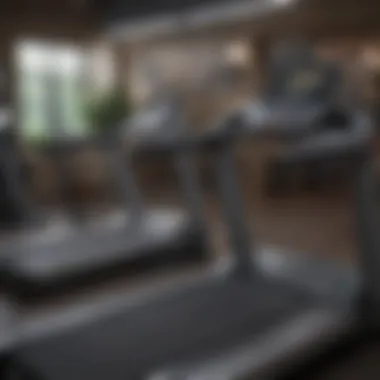
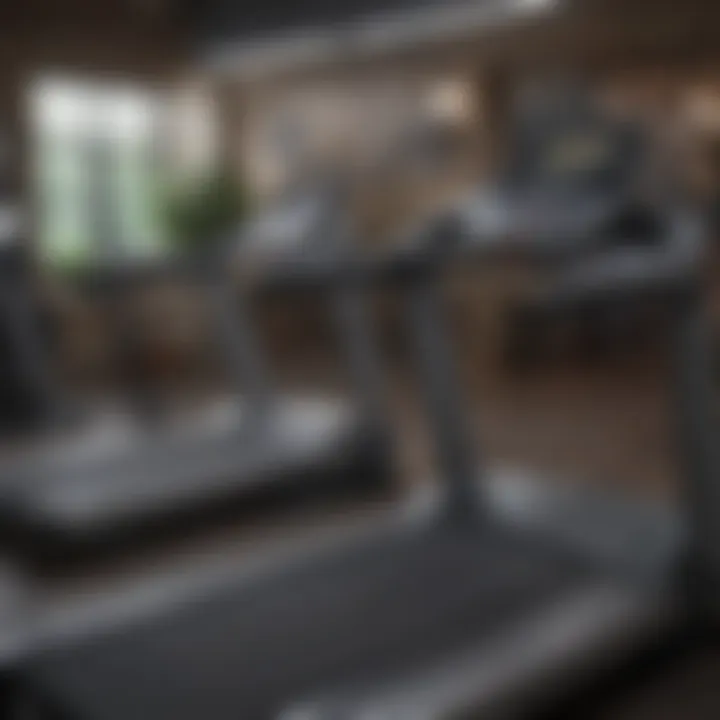
Additionally, treadmills designed for commercial use typically feature superior durability compared to those made for home environments. This can be a crucial consideration for fitness centers or personal trainers who require equipment to endure frequent usage.
The type and quality of running surface also impact cost. For example, some curve treadmills incorporate advanced cushioning technologies that provide better joint support during workouts. These enhancements not only elevate the cost but also improve user experience. Choosing a model with durable materials can lead to longer-term savings, as it may require fewer repairs over time.
Brand Reputation
Brand reputation significantly influences the pricing of curve treadmills. Well-established brands like Woodway and Assault Fitness have earned their standing through years of reliable performance, innovation, and customer satisfaction. Consumers are generally willing to pay a premium for brands that have a proven track record.
Researching a brand’s history, customer reviews, and overall market presence can offer insights into the reliability of their products. Brands with strong reputations are more likely to provide quality assurance and long-term customer support, which is a crucial factor when assessing value. Additionally, investing in a reputable brand can alleviate concerns about performance and maintenance.
Features and Technology
The range of features and technology available on curve treadmills can vary widely, affecting their price points. Advanced models may offer features like digital displays, user tracking, programmable workouts, and integration with fitness apps. Some treadmills even include heart rate monitors and Bluetooth connectivity to enhance the workout experience.
Higher-end models usually come with features that promote a safer and more effective workout environment. For instance, gradient-adjustable running surfaces can cater to different training intensities. Furthermore, many modern treadmills include sophisticated tracking systems that analyze workout data—valuable for users aiming to optimize performance.
While some consumers may prioritize basic functions, others may find that these added technologies justify the higher cost due to their potential impact on fitness outcomes.
Warranty and Customer Support
The warranty and customer support offerings can greatly influence the perceived value of a curve treadmill. A strong warranty demonstrates a manufacturer's confidence in their product. It typically covers key components, while shorter warranties or limited coverage may indicate lower manufacturer trust in durability.
Post-purchase support is also essential. Excellent customer service can make a significant difference in the ownership experience. It can help address issues that arise and assist with maintenance questions. Users should consider the availability of service options as well. Some brands offer on-site support, while others may require customers to handle repairs independently or solely through retail partners.
Understanding these factors enables buyers to evaluate costs beyond the sticker price, ensuring long-term satisfaction with their investment.
Benefits of Investing in a Curve Treadmill
Investing in a curve treadmill offers several advantages that can enhance fitness routines. Curve treadmills are distinct due to their self-powered design, which requires users to generate speed and resistance through their own effort. This unique feature translates into various benefits that affect cardiovascular fitness, muscular endurance, and caloric expenditure.
Enhanced Cardiovascular Training
Using a curve treadmill significantly boosts cardiovascular training. The nature of the curve design engages more muscle groups compared to traditional treadmills. Users must push their bodies to maintain speed, leading to improved heart and lung capacity. Additionally, because these treadmills require no electrical input, they can be used anywhere, promoting more consistent and varied workouts. Research indicates that workouts on curve treadmills can elevate heart rates more effectively, providing a superior cardio workout in less time.
Improved Muscular Endurance
Muscular endurance benefits significantly from the use of curve treadmills. The incline of the running surface challenges the user’s legs more than flat treadmills do. This natural resistance encourages not just aerobic conditioning but also strengthens key muscles, including quads, hamstrings, and calves. Training on a curve treadmill activates stabilizer muscles, which can lead to better overall muscle tone. Regular use over time can lead to marked improvements in endurance levels, necessary for any athletic endeavor.
Increased Caloric Burn
One of the most compelling reasons to invest in a curve treadmill is the potential for increased caloric burn. Users often find that workouts feel more intense due to the self-driven nature of the machine. Studies show that using a curve treadmill can result in up to 30% more calories burned compared to a traditional treadmill at similar speeds. This increased efficiency can significantly aid those seeking weight loss or maintenance. The combination of elements that engage multiple muscle groups while raising heart rate contributes to optimizing fat burning both during and post-exercise.
"Investing in a curve treadmill is not just about the purchase. It's about transforming your workout routine and achieving long-term fitness goals."
Overall, the benefits of investing in a curve treadmill extend well beyond the initial cost. Enhanced cardiovascular health, improved muscular endurance, and increased caloric expenditure make these treadmills a valuable addition to any fitness regimen. Understanding these advantages enables better informed decisions for fitness enthusiasts looking to maximize their efficiency and results.
Comparative Analysis of Curve Treadmills and Traditional Treadmills
When considering fitness equipment, comparing curve treadmills and traditional treadmills is essential. This analysis helps identify the unique characteristics and benefits of curve treadmills, leading to informed purchasing decisions. Understanding these differences can also guide fitness professionals in recommending suitable equipment to clients.
Cost Considerations
Cost plays a significant role in the decision-making process when investing in fitness equipment. Curve treadmills typically show a higher initial price tag compared to traditional treadmills. This is due to their advanced design, which features a curved running surface and self-powered mechanism. For instance, while a traditional treadmill may range from a few hundred to several thousand dollars, curve treadmills often start around $1,500 and can exceed $5,000 for high-end models.
However, the higher upfront cost may yield better long-term value due to the benefits they offer. These treadmills can enhance workout intensity without requiring electrical power, thus saving on energy costs. Additionally, they may result in fewer maintenance expenses over time. Curved treadmills are generally built with durable materials designed to withstand rigorous use, which can lead to reduced repair or replacement costs.
- Higher initial costs: Curved treadmills are often more expensive than traditional ones.
- Long-term value: The durability and energy efficiency may offset the upfront investment.
Understandably, consumers must weigh these cost considerations against their fitness goals and how frequently they anticipate using the equipment.
Performance Metrics
Performance metrics are crucial when evaluating the effectiveness of fitness equipment. Curve treadmills tend to outshine traditional treadmills in several areas. Users of curve treadmills engage more muscles during their workouts, as they often require users to push more aggressively against the curved surface. This leads to greater caloric burn and improved cardiovascular fitness.
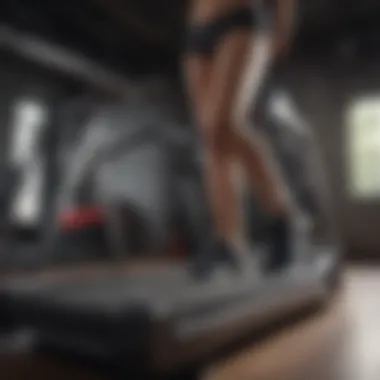
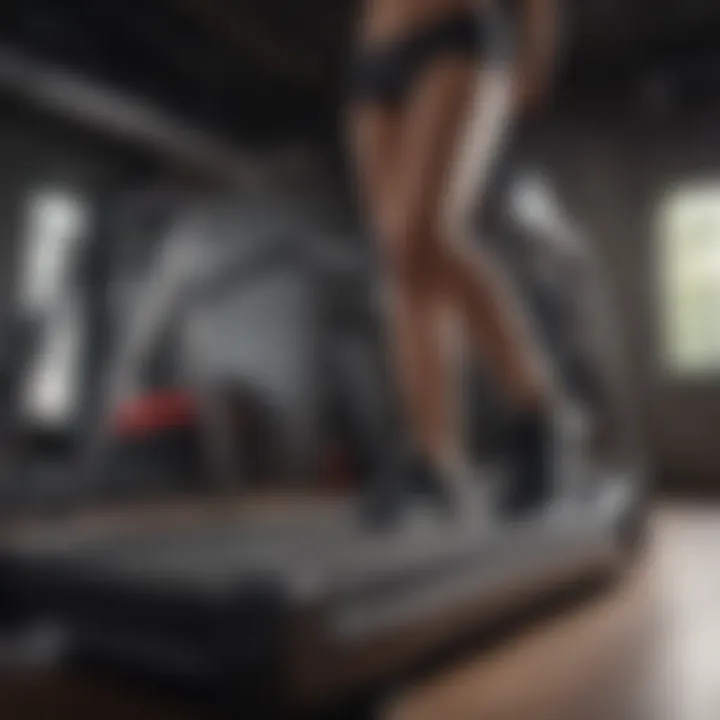
Additionally, curve treadmills promote better biomechanics—users typically adopt a more natural running form. These treadmills respond to the user’s pace, enabling them to control their speed and resistance more effectively. Traditional treadmills often limit users to preset speeds and incline levels, which can reduce the variety in workouts and lead to a plateau in fitness gains.
- Engagement of muscle groups: Curved surface requires more activation of various muscles.
- Caloric expenditure: Users often burn more calories due to the increased effort.
- Natural biomechanics: Encourages a realistic running motion.
Finding the Right Curve Treadmill for Your Needs
Choosing the right curve treadmill is critical for anyone invested in enhancing their fitness journey. Different factors must be considered to match the treadmill's capabilities with personal fitness objectives and budget constraints. This section elaborates on essential elements that influence the selection process. It is designed to guide health professionals, fitness trainers, and wellness coaches in directing clients towards making informed decisions.
Assessing Personal Fitness Goals
Assessing personal fitness goals is the starting point for selecting a curve treadmill. It is essential to understand what you aim to achieve with this equipment. Are you focusing on endurance, strength training, or weight loss? For serious athletes, maximizing running efficiency is crucial. Conversely, individuals seeking general fitness might prioritize comfort and ease of use over performance metrics.
Typically, it helps to categorize fitness goals into specific areas:
- Endurance Building: If aerobic conditioning is the focus, consider curve treadmills that offer varied resistance levels.
- Fat Burning: Models that have features to monitor heart rate might provide incentives to stay within targeted zones.
- Strength Training: Certain configurations allow users to perform additional workouts, complementing the cardio aspect.
A comprehensive evaluation of personal goals ensures the chosen treadmill can adequately support the user's objectives.
Budget Considerations
Budget is a significant factor that plays into selecting a curve treadmill. It is prudent to assess not only the initial cost but also potential ongoing expenses like maintenance and repair over time. Setting a budget may seem straightforward but requires some thought.
Here are some points to keep in mind:
- Initial Investment: Entry-level models may be appealing, but they might lack durability when compared to more expensive options.
- Long-term Costs: Balance the initial expenditure against potential maintenance costs. Some treadmills may offer better warranty options than others.
- Feature Relevance: Evaluate whether advanced features justify their prices. Adding tech features might increase costs without necessarily enhancing your workout experience.
Ultimately, it is vital to ensure that the price aligns with quality and functionality. Cost-effectiveness can lead to improved satisfaction and continued use of the treadmill.
"Investing in the right treadmill is more than just a purchase; it’s about prioritizing your long-term fitness journey."
Identifying suitable curve treadmills involves reflecting on both personal goals and financial resources. Each decision ultimately contributes to achieving desired fitness outcomes.
Potential Drawbacks of Curve Treadmills
When considering the purchase of a curve treadmill, it is essential to examine not only the benefits but also the potential drawbacks. This understanding enables consumers to make informed decisions based on both their fitness goals and financial constraints. It is easy to get drawn to the advantages, but overlooking downsides can lead to unsophisticated choices.
Initial Investment Costs
Curve treadmills tend to have higher upfront costs compared to traditional treadmills. This is important to recognize as it directly affects a buyer's decision-making process. Prices for curve treadmills can range significantly, often starting from around $2,000 and reaching as high as $7,000.
Investors should evaluate their budgets carefully. The choice to purchase a curve treadmill often means committing a larger sum of money initially. This investment should be weighed against potential long-term benefits in terms of fitness results. Not all consumers can afford the premium cost, and some may need to consider alternative options. Additionally, it is advisable to assess the potential return on this investment. If one can leverage these machines effectively, they may enhance performance and fitness levels, justifying the initial financial outlay.
Space Considerations
Another aspect worth mentioning is the space required for a curve treadmill. These machines are generally bulkier than standard treadmills. They need enough room to accommodate safe usage, including sufficient space around the sides for both stability and safety during workouts.
Home environments vary widely. For those living in smaller apartments or compact homes, incorporating a curve treadmill can be challenging. Evaluating where the treadmill will fit is crucial before making any purchase. A poorly placed treadmill can hinder workout motivation. Without proper space, the benefits gained from having such equipment may diminish due to limited usability.
Furthermore, if one considers purchasing a curve treadmill for a commercial setting, like a gym, it is crucial to analyze the overall floor space available. Limited space can restrict the number of machines available to customers, impacting operational efficiency.
In summary, while curve treadmills offer distinct advantages, the potential drawbacks necessitate careful consideration. Buyers must not only look at the initial investment but also evaluate whether they have sufficient space to accommodate these machines. This understanding will contribute to a more informed purchasing decision.
Where to Buy Curve Treadmills
When considering an investment in a curve treadmill, knowing where to make the purchase is critical. This section covers the various options available, highlighting their advantages and potential considerations that may influence your decision. From authorized retailers to online marketplaces, the location where you buy can affect warranty, pricing, and your overall experience.
Authorized Retailers
Purchasing from authorized retailers provides several benefits. First, it often guarantees that the equipment is new and comes with full manufacturer support. Authorized retailers have established relationships with manufacturers, ensuring that the products they sell are genuine and of high quality. Additionally, these retailers are more likely to offer detailed product knowledge and expert advice on the best model to suit your needs.
Another significant benefit is warranty clarity. When you buy from authorized sources, you can have confidence that your warranty will be honored, should any issues arise with your treadmill. This is especially crucial for high-investment products like curve treadmills, which can have complex features.
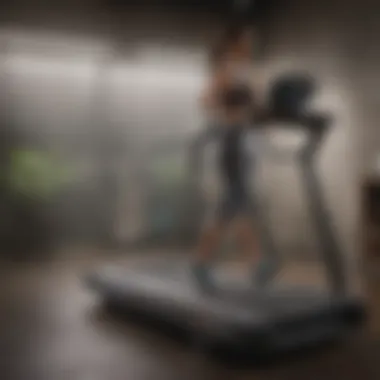
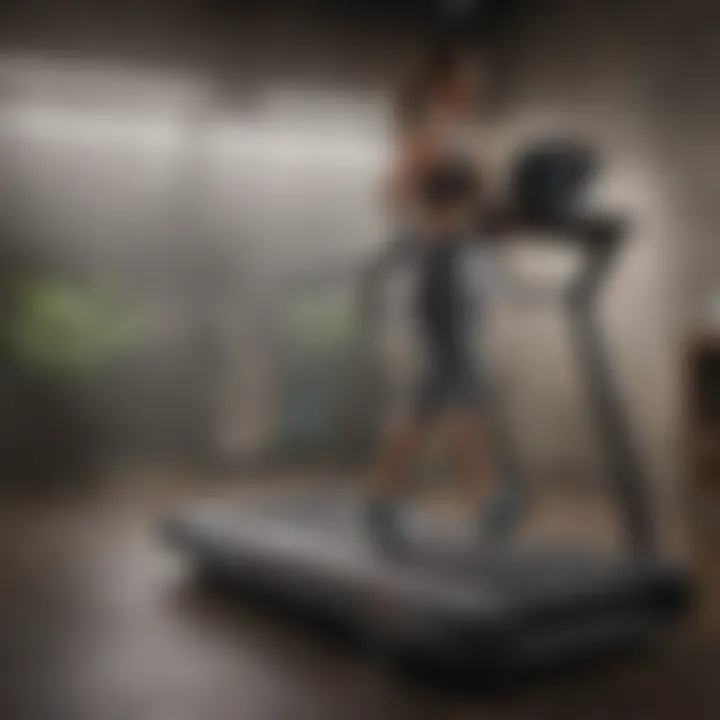
Considerations when visiting authorized retailers include:
- Product Availability: Ensure they have stock of the model you're interested in.
- Pricing Competitiveness: It may be more expensive than other locations; compare prior to making a decision.
- In-person Testing: Physical interaction with the treadmill can help confirm its suitability for your needs.
Online Marketplaces
Online marketplaces present a different set of advantages when purchasing curve treadmills. They often offer a broader range of options, sometimes at competitive prices. Websites like Amazon or eBay can list various models, giving you a good overview of what is currently available in the market without needing to visit multiple stores. Furthermore, customer reviews on these platforms can provide insights into the treadmill's performance and reliability in real-world settings.
However, there are also challenges associated with online purchasing. Key considerations include:
- Verification of Seller Reputation: Ensure the seller is reputable to avoid counterfeit products.
- Shipping and Returns Policy: Understand shipping fees and the return process in case the treadmill does not meet expectations.
- Assembly Requirements: Check if you will need professional assembly, which can incur additional costs.
"Purchasing method can greatly affect the experience, warranty, and satisfaction. Consider all options carefully."
Through careful consideration of where to buy a curve treadmill, you can better align your purchase with your specific needs and budget while maximizing long-term satisfaction.
Maintenance Costs of Curve Treadmills
The costs associated with maintaining curve treadmills are an often overlooked yet critical aspect of ownership. Unlike traditional treadmills, curve treadmills have unique mechanics and structural designs that can affect ongoing expenses. Addressing maintenance is not just about ensuring machine functionality; it also ties directly into long-term investment value for fitness enthusiasts and professionals alike. The importance of understanding these costs lies in supporting informed purchasing decisions, avoiding unexpected financial burdens, and ensuring that the equipment remains effective over time.
Routine Maintenance Requirements
Routine maintenance is essential for optimal performance. Curve treadmills typically require less frequent upkeep than motorized units but still demand attention. The most common maintenance tasks include inspecting the surface for wear and ensuring that it is free of debris. Regularly cleaning the equipment is vital to prevent dirt and dust accumulation, which could lead to operational issues. Moreover, checking for loose bolts or components can help avoid bigger mechanical failures down the line.
Another integral task is lubricating the moving parts. While some high-end models come pre-lubricated and are less demanding, keeping an eye on the manufacturer's guidelines is wise. Following a maintenance schedule can prolong the lifespan of the treadmill significantly. Users are also advised to recalibrate the machine periodically, especially when it is used heavily in a gym setting.
Potential Repair Costs
Repair costs for curve treadmills can vary based on the issue and the model. Basic repairs, such as replacing a worn-out running surface, can be straightforward but may still incur costs averaging between $300 to $800, depending on the brand. More complex problems, like drivetrain failures, could run significantly higher, possibly exceeding $1000.
It is also worth noting that repairs may not always be covered under warranty, especially for wear-and-tear components. Therefore, users should consider the warranty terms when purchasing. Additionally, having a reliable service provider can help mitigate costs by addressing issues before they escalate.
"Understanding maintenance costs equips users with the knowledge to manage their investments more effectively, ensuring both durability and performance at an optimal level."
In summary, managing the maintenance and repair aspects of owning a curve treadmill is essential. Recognizing the routine tasks involved and being prepared for potential repairs ensures that users can focus on their fitness goals with peace of mind.
User Reviews and Experiences
User reviews and experiences provide vital insight into the real-world application and performance of curve treadmills. While technical specifications and marketing materials highlight features and benefits, user testimonials offer a grounded perspective. Such feedback covers a spectrum of experiences, which can aid potential buyers in making informed decisions. Understanding user sentiment adds depth to the purchasing process, guiding one towards a curve treadmill that aligns closely with individual preferences and needs.
Positive Feedback
Many users express satisfaction with curve treadmills, primarily citing their ergonomic design and workout efficiency. The unique curve mechanism often facilitates a more natural running motion, leading to improved motivation and performance. Reviews frequently emphasize:
- Increased engagement during workouts, as users tend to feel more challenged and focused.
- Enhanced caloric burn, given that the users must exert more energy to maintain speed.
- Low impact on joints compared to traditional treadmills, which has been particularly appealing to those with prior injuries.
- Versatility in workout routines, allowing for various intensities and incline settings.
"I noticed a significant difference in my stamina after switching to a curve treadmill. It feels more like running outside, and I can really push myself!"
— Satisfied Customer
In addition, many reviews mention the aesthetic appeal of these treadmills. Users appreciate their sleek design, which often enhances home gym decor, making fitness more visually inviting.
Common Complaints
Despite the generally positive sentiment, some common complaints about curve treadmills have emerged in user reviews. These complaints often touch on the following aspects:
- Initial Learning Curve: New users sometimes find the transition challenging. The need to adapt to the non-motorized operation can be a hurdle, especially for those accustomed to traditional options.
- Cost Concerns: While they offer significant benefits, many users cite the price as a major downside. Curve treadmills can be more expensive than conventional models, which may deter budget-conscious consumers.
- Space Requirements: Some users point out that these treadmills can be bulkier and require more room than expected. This is a key consideration for individuals with limited space at home.
- Noise Levels: A few users mention that curve treadmills can be somewhat noisy during use, potentially affecting their usage in shared living environments.
These candid admissions reveal that while curve treadmills have unique advantages, they are not without their drawbacks. Potential buyers must consider both positive feedback and common complaints when making their choice.
Closure
The conclusion serves as a pivotal element in reinforcing the key insights addressed throughout the article on the cost of curve treadmills. It is vital to understand that investing in a curve treadmill is not only about the initial price but about long-term value and functionality. The comprehensive examination indicates several factors that warrant consideration. This spans from initial prices, key features, and overall benefits to maintenance and user experiences.
Summarizing Key Takeaways
- Diverse Price Range: Curve treadmills range from entry-level models to high-end choices, often influenced by brand reputation and technology.
- Paying for Quality: Higher costs typically equate to better materials and durability, ensuring longevity of equipment.
- Maintenance and Repairs: The overall investment extends beyond purchase price, with ongoing maintenance implicitly affecting long-term costs.
- User Satisfaction: User feedback plays a crucial role, highlighting the importance of selecting a model that aligns with personal fitness goals.
Final Thoughts on Investment
When considering the purchase of a curve treadmill, individuals should weigh both economic and practical facets. While the initial costs might seem daunting, the potential health benefits and enhanced fitness outcomes can justify the expense. It's essential to evaluate personal fitness needs, budget capacities, and long-term goals. An informed choice can lead to enhanced workouts and improved physical well-being, making the journey towards fitness more effective and rewarding. Understanding the intricacies of curve treadmill costs might illuminate the path to a smarter investment in one's health.















